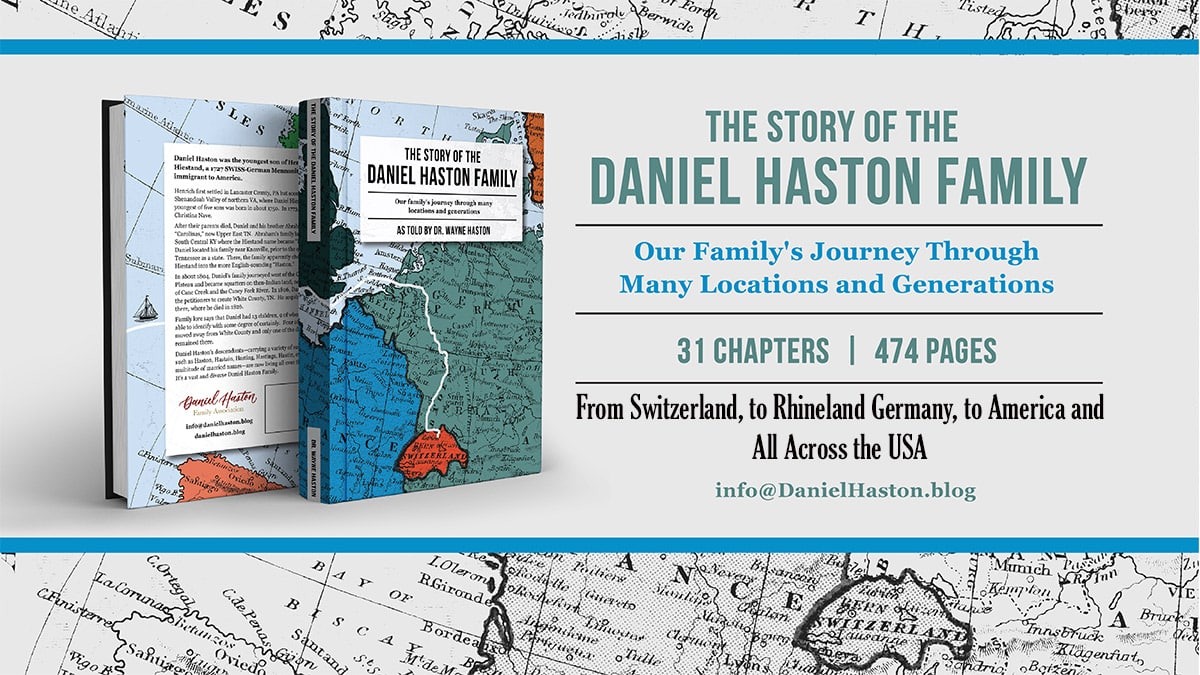"Bud" (Clarence E.) Haston, Jr.
Awarded the Gold Star Honor In WWII - An Honor Nobody Wants to Win
– Thanks to Chuck Haston of McMinnville, TN for sharing this information with us.
Chuck’s father (Judge Charles D. Haston) is Bud Haston’s kid brother.

“Bud” Haston (Clarence Eugene Haston, Jr.) grew up in McMinnville of Warren County, TN. As is true of most Hastons, Bud’s family was from Van Buren County originally. He was a descendant of Daniel Haston through David Haston. He was a very popular student at McMinnville Central High School, and for one year at Castle Heights Military Academy in Lebanon, TN. He was the manager of the football team at both of the high schools he attended and was chosen as “Bachelor of Ugliness” at Warren County Central–which means he was perceived to be the most handsome boy in his senior class.

Bud was a handsome guy. He always spoke...very cordial. Bud had an “outgoing” personality and was very charming. If someone mentioned the name “Bud Haston” everyone knew who he was and everyone liked him, he was extremely popular. If you saw Bud around town he always had friends with him. He was the kind of guy everyone wanted to be like and be around.
John Bragg, a hometown friend of Bud
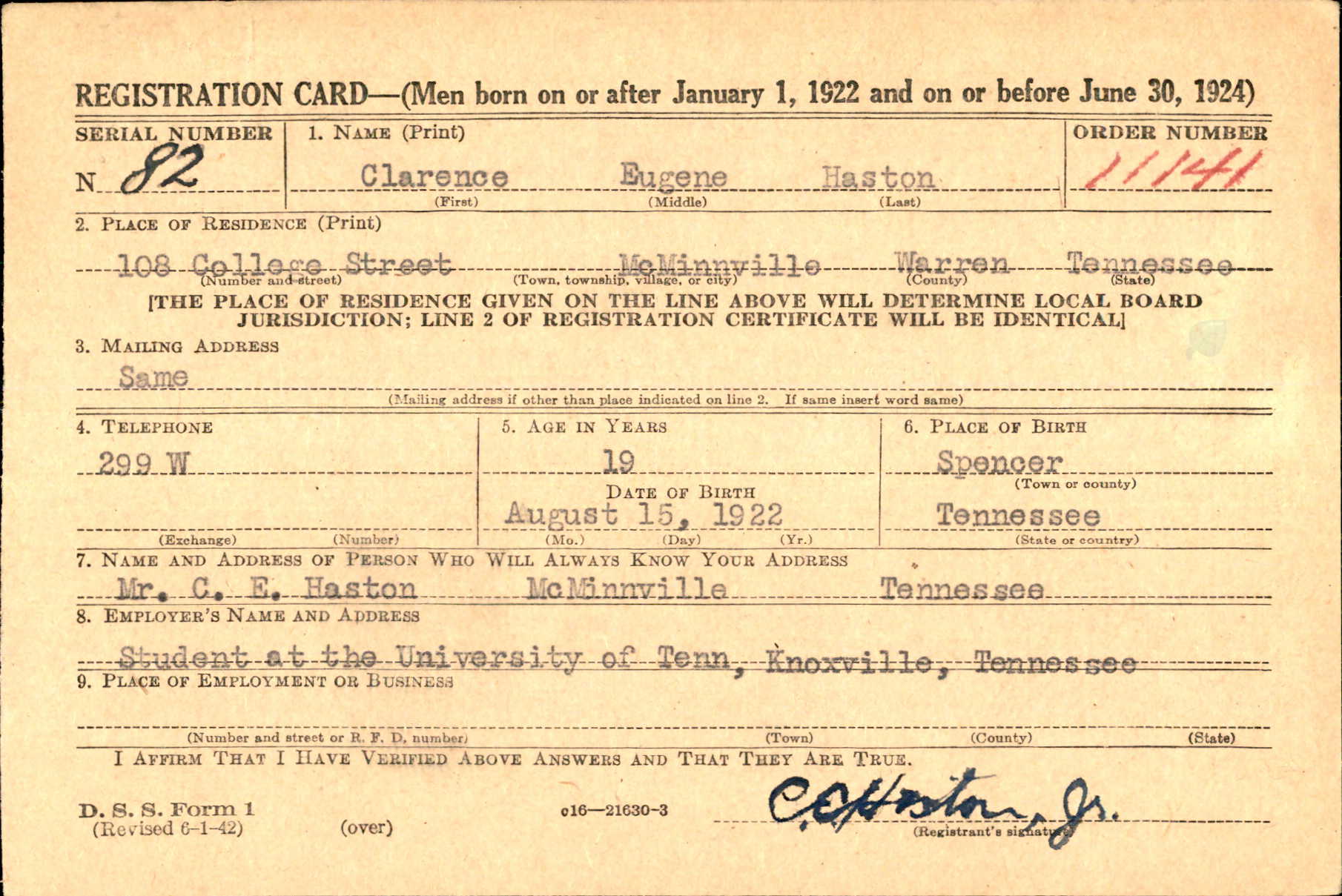

After one year as a pre-med student at the University of Tennessee in Knoxville, Bud enlisted in the army on August 5, 1942. He was trained at the Fitzsimmons Army Hospital in Denver, CO, and then assigned to the 7th Armored Division, 23rd Armored Infantry Battalion, MED/23. Late in the summer of 1944, he was shipped to England and got his first major battle experience in France at the Battle of Chartres, August 15-18, 1944.
French resistance to Hitler’s army was very strong at Chartres. Casualties were high in the battle there, but the city was liberated from German control and the famous Cathedral of Chartres was spared.
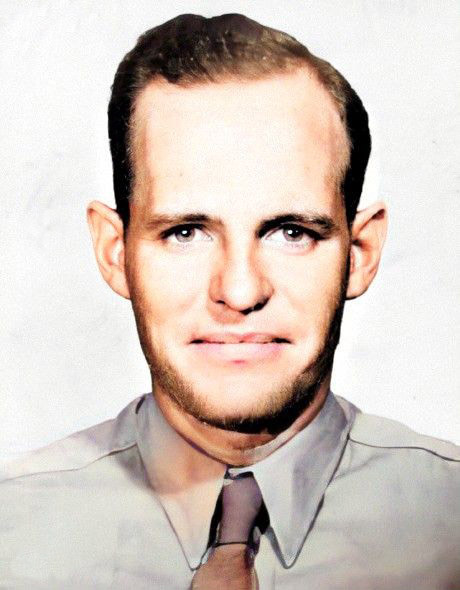

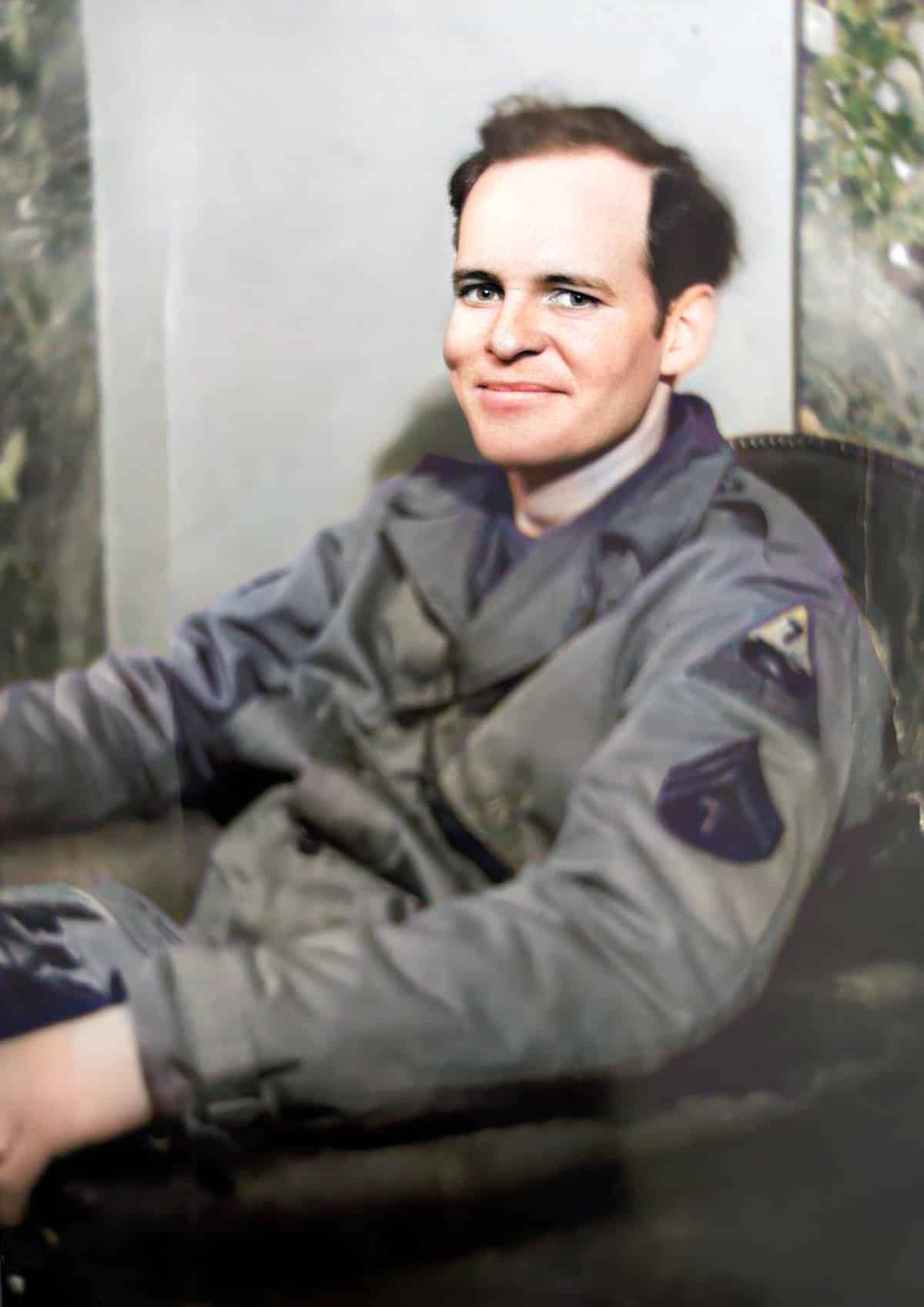
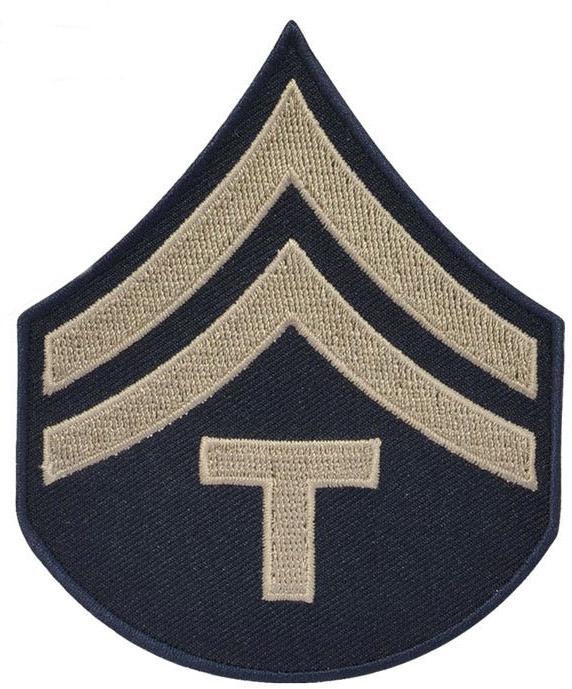
Bud held the rank of Technician 5th Grade or Tech-5. Technicians possessed specialized skills that were rewarded with a higher pay grade, but had no command authority. T/5 was under the pay grade 5, along with corporal. Technicians were easily distinguished by the “T” imprinted on the standard chevron design for that pay grade.
Bud’s specific role was an “Aidman,” essentially the same thing as a “Medic” in his unit. His job was to practice front-lines emergency patient care until the patient could be transported to the aid station. The mortality rate for Aidmen was high!
Maurice Lonsway, who became an MD after the war, was a friend and fellow Aidman with Bud. Years later, Dr. Lonsway told the Haston family that he and Bud were responsible for about 400 people. They were assigned to a jeep with two others. The two others were primarily responsible for transporting the injured back to the aid station. He (Lonsway) and Bud rode on stretchers in the back of the jeep until they reached a point just behind the front lines. He and Bud would dismount…Bud went one way and he went the other. They went from foxhole to foxhole treating the wounded. If the combat was intense, they had to provide as much treatment as possible and wait to transport. He said he remembered “a lot of yelling and a lot of running” and that during combat….given the number of people they were responsible for….they were very busy.
Bud was wounded by a mortar earlier in late 1944 and was awarded the Purple Heart for that…and of course another one upon his death. His friend wrote home that Bud was written up for the Bronze Star but it was denied due to the circumstances, which, involved him crawling, under fire, to reach and treat a German soldier. I think we all take the most pride in that particular event. We’d like to think that that act exemplifies who he was, irrespective of awards or medals.
Chuck Haston
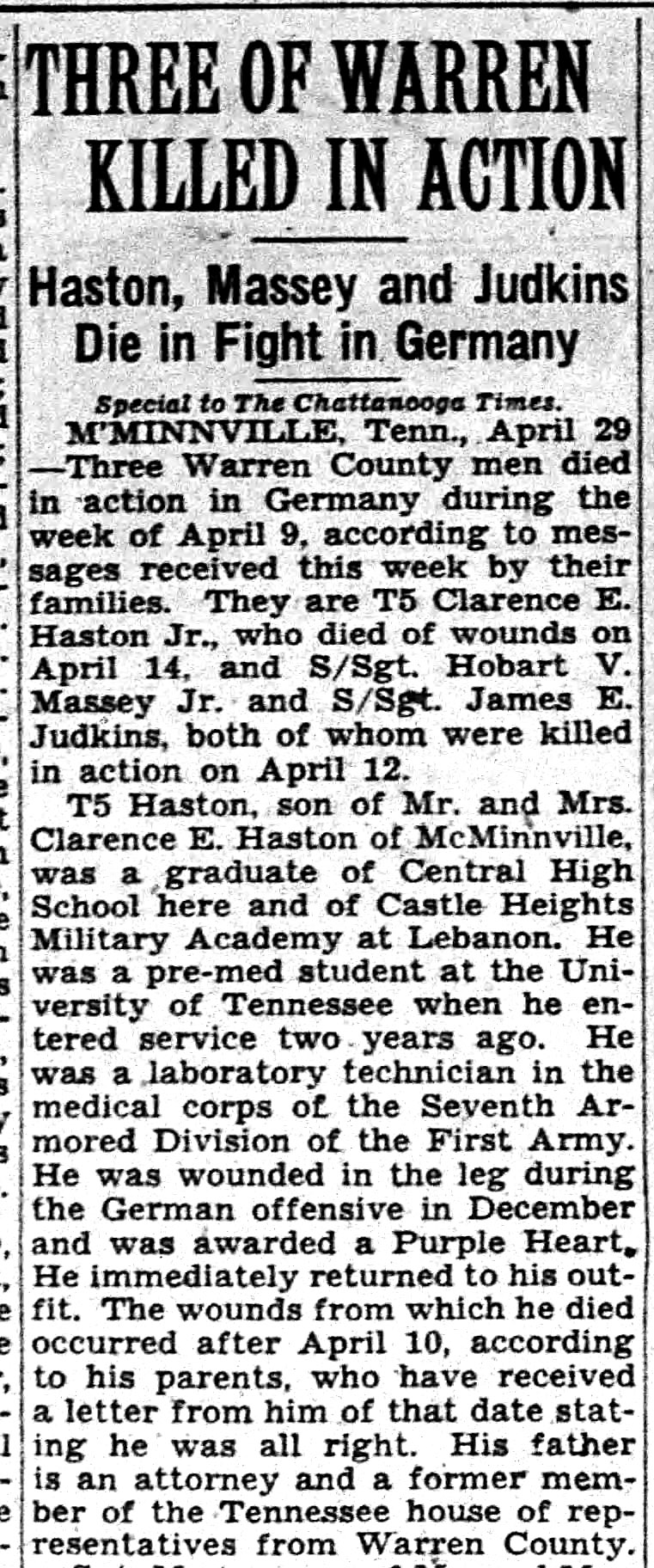
The mission that the 23rd Armored Infantry Battalion was on, at the time, was to locate and stop remaining pockets of German artillery fire on the high ground near Hemer. Per letters home from those with him, they had stopped at an old factory to eat breakfast. Bud stood up and as he walked in front to the door opening, a stray artillery round landed just outside the door. He sustained a compound fracture of the arm and clavicle area and blood vessels underneath. He was loaded onto a jeep to be transported to the aid station and was asking for his things to take with him but soon went unconscious and died from blood loss before reaching the aid station.
The Telegram and the Letter
As told by Judge Charles D. Haston, relayed through his son, Chuck Haston.
Notification of Bud’s death arrived via Western Union to Lively-Ferguson drug store midday on (or about) the 15th of April 45. The young lady in charge of the Western Union telegram traffic lived on College Street in the “Turner” house located next door to Granddaddy and Grandmother. She saw it and immediately contacted Judge Brady. Judge Brady took it to Granddaddy Haston at his office.
Dad (who became Judge Charles D. Haston) had been to a cub scout meeting after school and was walking home between 4 and 5 P.M. When he got in front of the house next door to his, Ersa Lyon was walking across the street toward Aunt Bess’ house. Ersa stopped in the middle of the street, turned and stared at dad, didn’t say a word, then continued across the street. Dad thought it was a bit strange, but continued into the house. When he walked through the front door he said he saw Dutch sitting in the ivory-colored chair in the living room and noticed a lot of flowers around. Still, it did not occur to him what had happened. He went back to his parents’ bedroom and sat in a chair at the foot of the bed. Soon, Granddaddy came back to the bedroom. He leaned over, put his hands on Dad’s shoulders, and said, “ Bud’s not coming home”…then told him to go down the street to play.

Obviously this was a traumatic time and it is hard to imagine the incredible loss felt by all. Bud was one of…if not THE last one killed in his unit. Granddaddy Haston told Dad later that he thought Bud had made it through the worst of it, and they were optimistic he would survive. He said that he did not see Granddaddy express his emotions, outwardly, ever. He is not sure how Granddaddy was able to keep things together during this time.
Bud Haston's Burial in the Netherlands American Cemetery
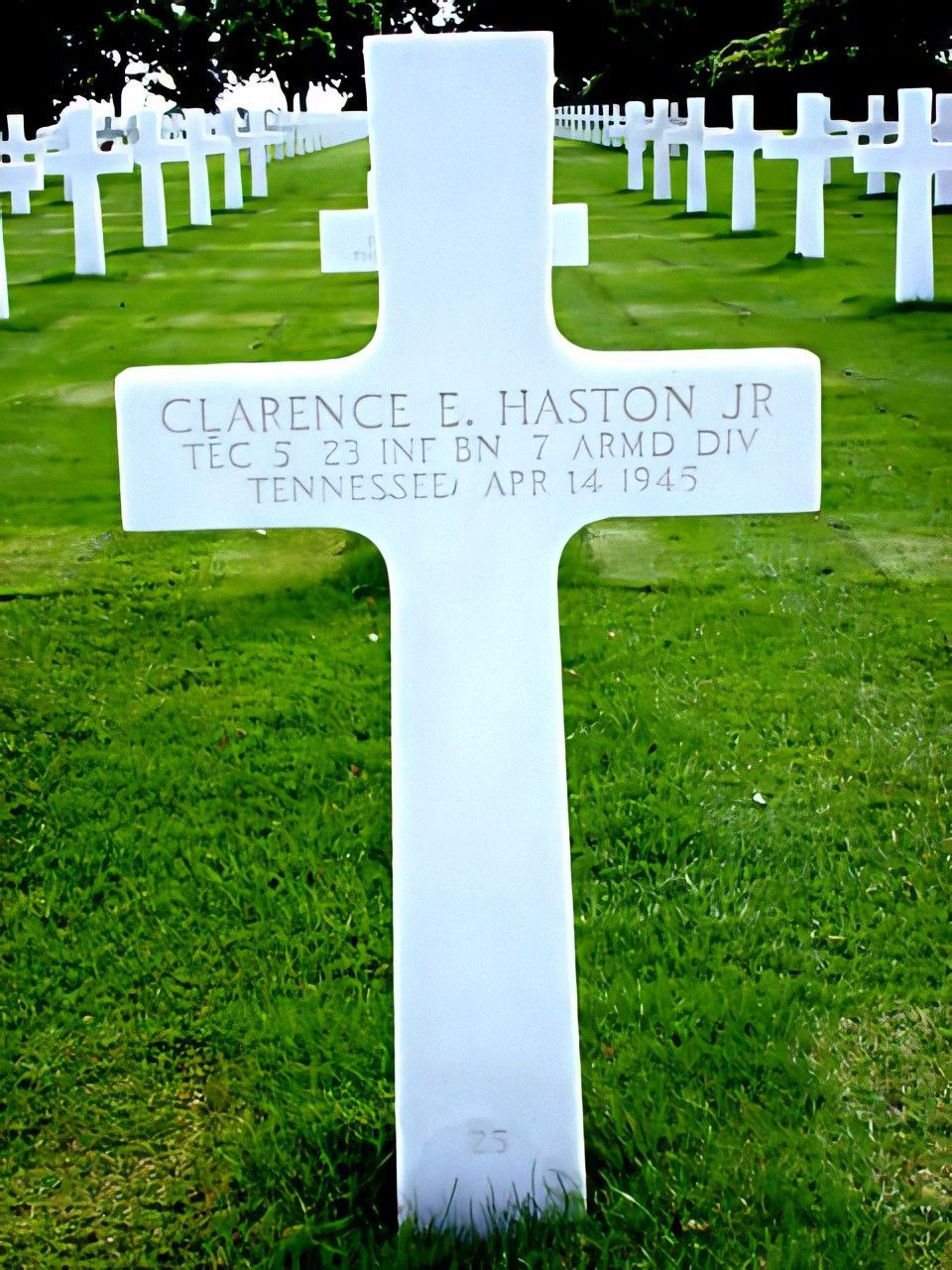
Bud died April 14th, 1945 near Deilinghofen Germany. When he was killed he was with the 23rd Armored Infantry Battalion (Med23) and was the last one in his unit killed in combat activities. The nickname of the 23rd AIB was “The Wolf” (thanks Mike Jones). He was a medic and at 23 years old was considered one of the “old men” of his outfit...something he wrote home about. He mentioned at one point it got pretty rough and the American and German medics shared the same barn and treated each other’s wounded.
Chuck Haston
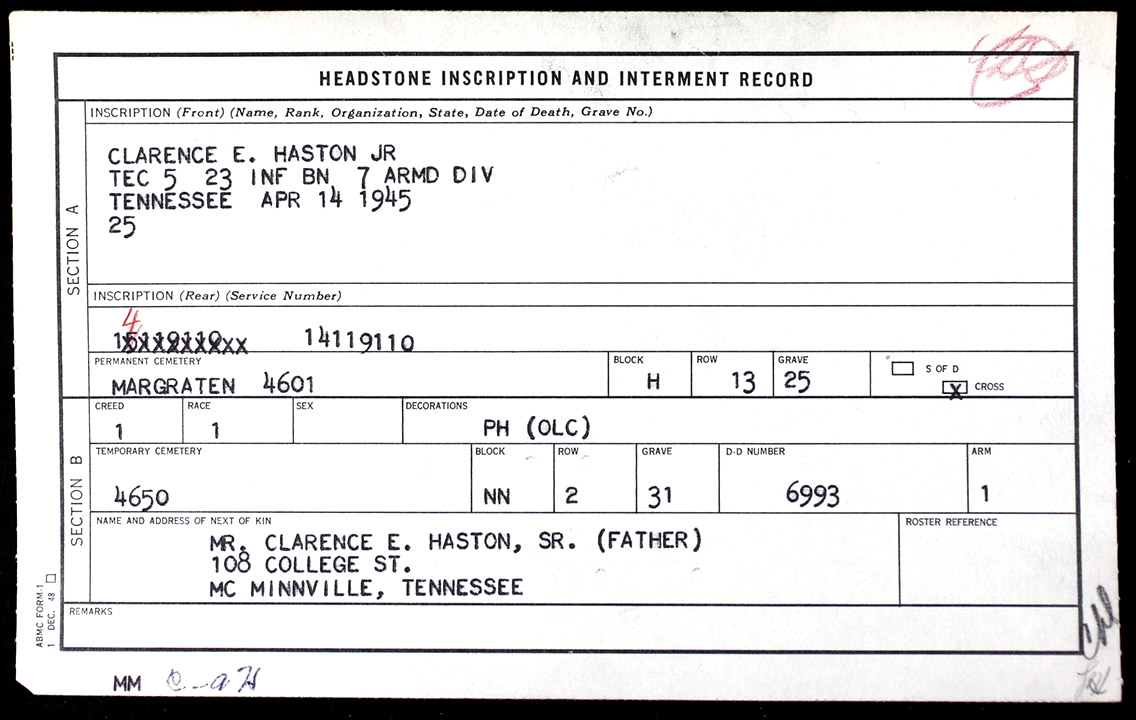
The Irony of the Location of Bud's Death
Bud was a descendant of our Daniel Haston. Thus, his Great-Great-Great-Great Grandfather was Henrich Hiestand, who grew up in the often war-torn Rhineland River Valley near where Bud was mortally wounded. The frequency of war in that area was probably one of the motivating reasons Henrich, Bud’s immigrant-to-America ancestor, left Germany to come to America. The village of Ibersheim, Germany from where our Hiestand-Haston ancestors lived was only 163 miles south of where Bud died.
Henrich Hiestand > Daniel Haston > David Haston > Isaac T. Haston > David L. Haston > Clarence E (Sr) Haston > Clarence E (Jr) aka Bud Haston
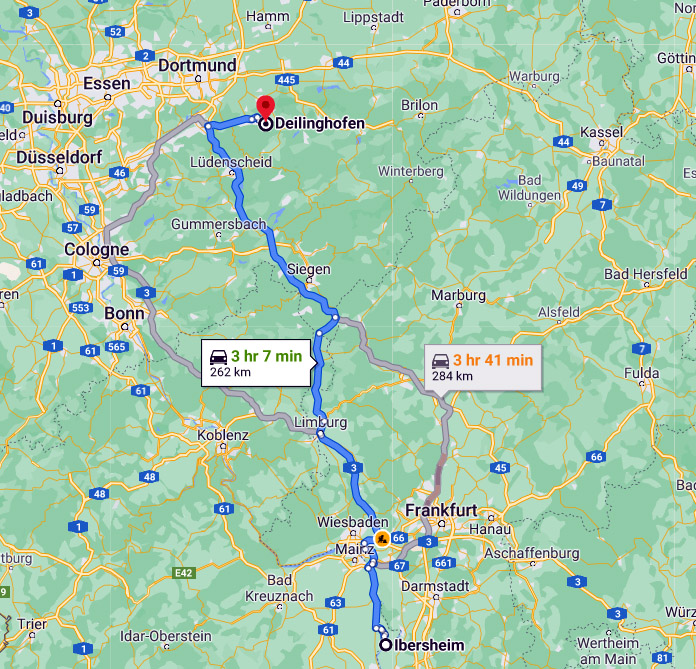
If you appreciated this article, please share it with others who might be interested.
